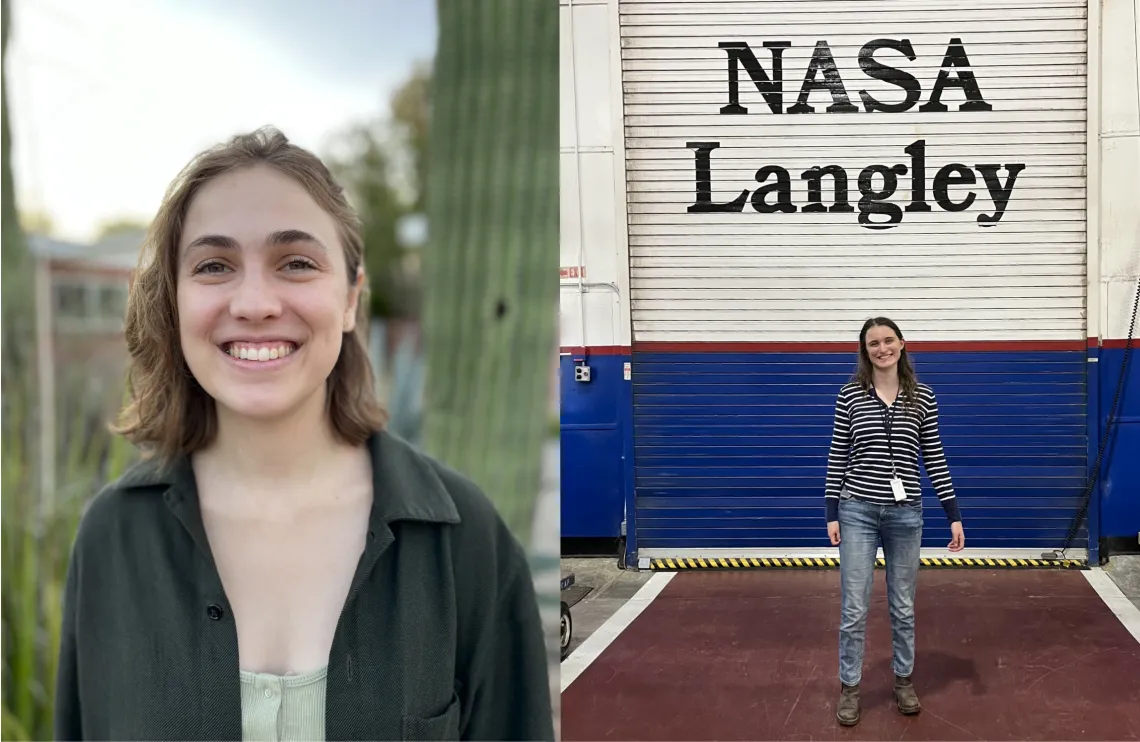NASA Space Grant Fellowships Awarded to Physics Graduate Students Maria Mutz and Charlotte Zehnder
May 8, 2024
Image

The UArizona NASA Space Grant Fellowship Program provides up to six graduate fellowships per year to students pursuing STEM degrees at the University of Arizona. This year, two fellowships were awarded to students in the Department of Physics, Maria Mutz and Charlotte Zehnder. The program's goals are to encourage individuals to pursue graduate education in a STEM field, support NASA-related research happening at the University of Arizona, and increase science communication and outreach. Fellowships are competitively awarded and recognize students for their high achievements and academic merit.
Charlotte Zehnder will work with Daniel Soh's group to obtain and improve a squeezed light source to apply to quantum machine learning and quantum sensing. She will use this squeezed light source to demonstrate improved sensitivity in imaging and interferometric measurements. Demonstration of improved interferometric measurements by higher resolution quantum sensing has been identified as a relevant research focus for NASA's Science Mission Directorate (SMD) due to its ability to improve astronomical imaging, optical communication, and navigation. She is especially interested in its application to NASA's Deep Space Optical Communication program, which moves toward lunar laser communication and its potential to improve atom interferometry measurements. This summer she is looking forward to interning with NASA Goddard’s Quantum Engineering and Sensing Technologies lab and better tailoring her future research here to NASA's current priorities.
For her outreach project, Charlotte will organize a Newtonian Physics workshop with the Circus Academy of Tucson for middle and high school students. This event will introduce many of the key physics concepts students learn in introductory labs, but with greater emphasis on hands-on learning as they swing on an aerial silk to learn about pendulum motion, or get an introduction to kinematics while learning to juggle.
Maria Mutz will be doing computational astrophysics research with Prof. Vasileios Paschalidis. Her work uses computer simulations to model the structure of neutron stars and the light we observe from them. These stars are left over from supernova explosions, and they contain the densest matter and strongest magnetic fields in the universe. Studying them can help us understand many mysteries in fundamental physics and the history of our universe, as well as help us build new space technologies. Advancements in telescope technology have done much to improve observations of these stars, but equally advanced models are needed if we want to discover everything that they can teach us. Improved neutron star models will be important for the future of NASA’s NICER mission and XNAV project, and could impact fields from nuclear physics to cosmology.
Maria’s Space Grant outreach project will be developing a physics and astronomy history game to be distributed to local K-12 schools and building interactive physics history displays for the PAS lobby. Future students and casual visitors to PAS can have fun learning about various physics concepts, how they have evolved over time, and the many scientists who made that possible.



